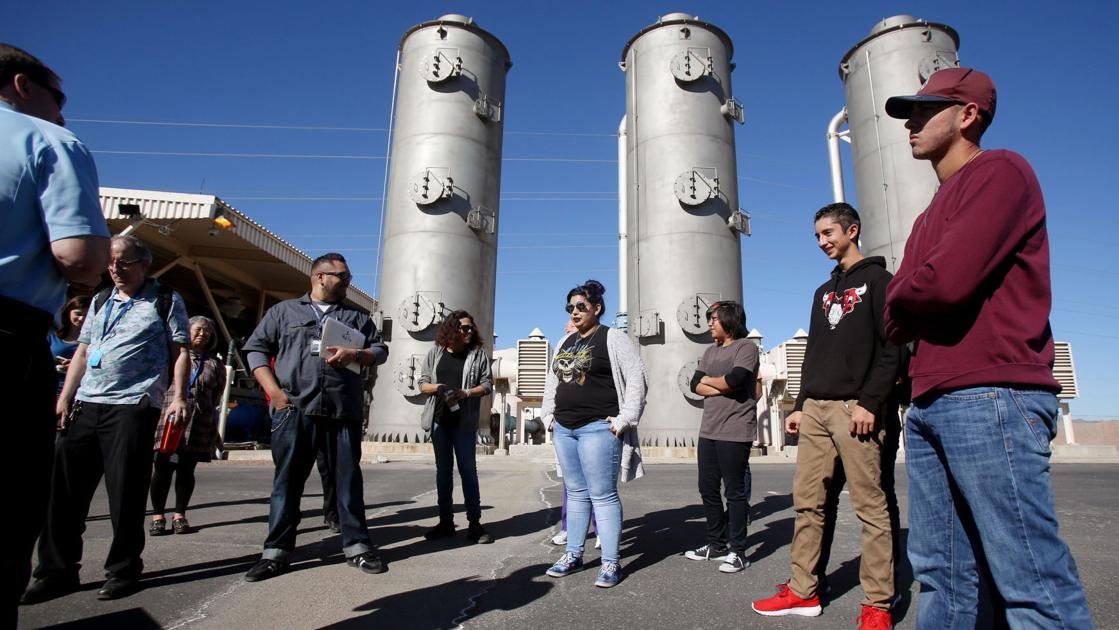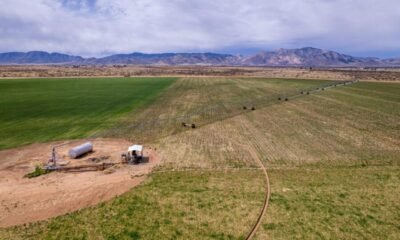Business
Tucson Water Declares South Side Treatment Plant Obsolete

Advancements in water treatment have led Tucson Water officials to consider shutting down a 22-year-old plant deemed unnecessary yet still mandated by law. A modern treatment facility that came online in 2014 now effectively removes contaminants, including the carcinogen 1,4-dioxane, identified as more hazardous than previously known. Jeff Biggs, Tucson Water’s strategic initiatives administrator, confirmed the old plant’s redundancy and financial burden.
Since the 1950s, the lower-income, predominantly Hispanic south-side community has contended with contaminated water. Defense industries had used trichloroethylene (TCE), an industrial degreaser, improperly disposing of it into soil and unlined wells, contaminating the water supply. Nearly three decades passed before residents realized they had been consuming and using contaminated water.
In 1994, Tucson Water began operating a treatment plant funded by the original polluters at the Tucson International Airport Area Superfund Site. Although significant progress has been made, completely removing TCE remains an ongoing challenge. Chad LaPora, Tucson Water’s environmental and regulatory compliance supervisor, estimates that it may take another 30 years to address the contamination adequately.
The older treatment plant primarily targeted TCE, failing to address 1,4-dioxane until Tucson Water constructed the Advanced Oxidation Plant. This new facility uses ultraviolet light and hydrogen peroxide to eliminate both TCE and 1,4-dioxane. Federal Superfund designation in 1983 tasked several parties, including the U.S. Air Force and major corporations, with the cleanup responsibilities.
Last month, the EPA proposed amendments to the 1988 cleanup plans at a forum in El Pueblo Activity Center. These changes, open for public comment until April 21, would potentially close the older plant and include 1,4-dioxane on the list of contaminants.
Residents expressed distrust of the treated water at the public forum, citing ongoing health issues despite cleanup efforts. Some demanded further studies to link diseases like cancer and lupus to contaminants. While EPA toxicologist Gerry Hiatt acknowledged health-risk assessments, he noted that the EPA does not employ physicians.
Local resident Linda Robles and Tucson toxicologist Dr. Farshad Shirazi are surveying neighbors about illnesses possibly tied to water contamination. Robles also leads the community group Environmental Task Force, driven by concerns about new chemical findings.
Tucson Water remains vigilant about other potential contaminants, including chromium-6, which gained attention through the film “Erin Brockovich.” While current concentrations in Superfund Site Area A are deemed safe, any significant changes or new regulations from the EPA could necessitate additional treatment facilities.
Yolanda Herrera, a long-time observer of the south-side cleanup, commended Tucson Water’s proactive approach but recognized ongoing skepticism among residents. Serving as co-chair of the Unified Community Advisory Board, Herrera supports health surveys to address community concerns while promoting informed discussions about water safety.
Educational efforts are crucial. University of Arizona associate professor Kristin Gunckel is developing a curriculum to teach high school students about groundwater contamination using computer models. Sunnyside High School senior Francisco Martinez, aware of past contamination affecting his family, valued the learning experience. Activist Herrera emphasized the importance of youth involvement to ensure continued accountability from government agencies.
Michelle Jaquette is a University of Arizona journalism student and an apprentice at the Arizona Daily Star.


















